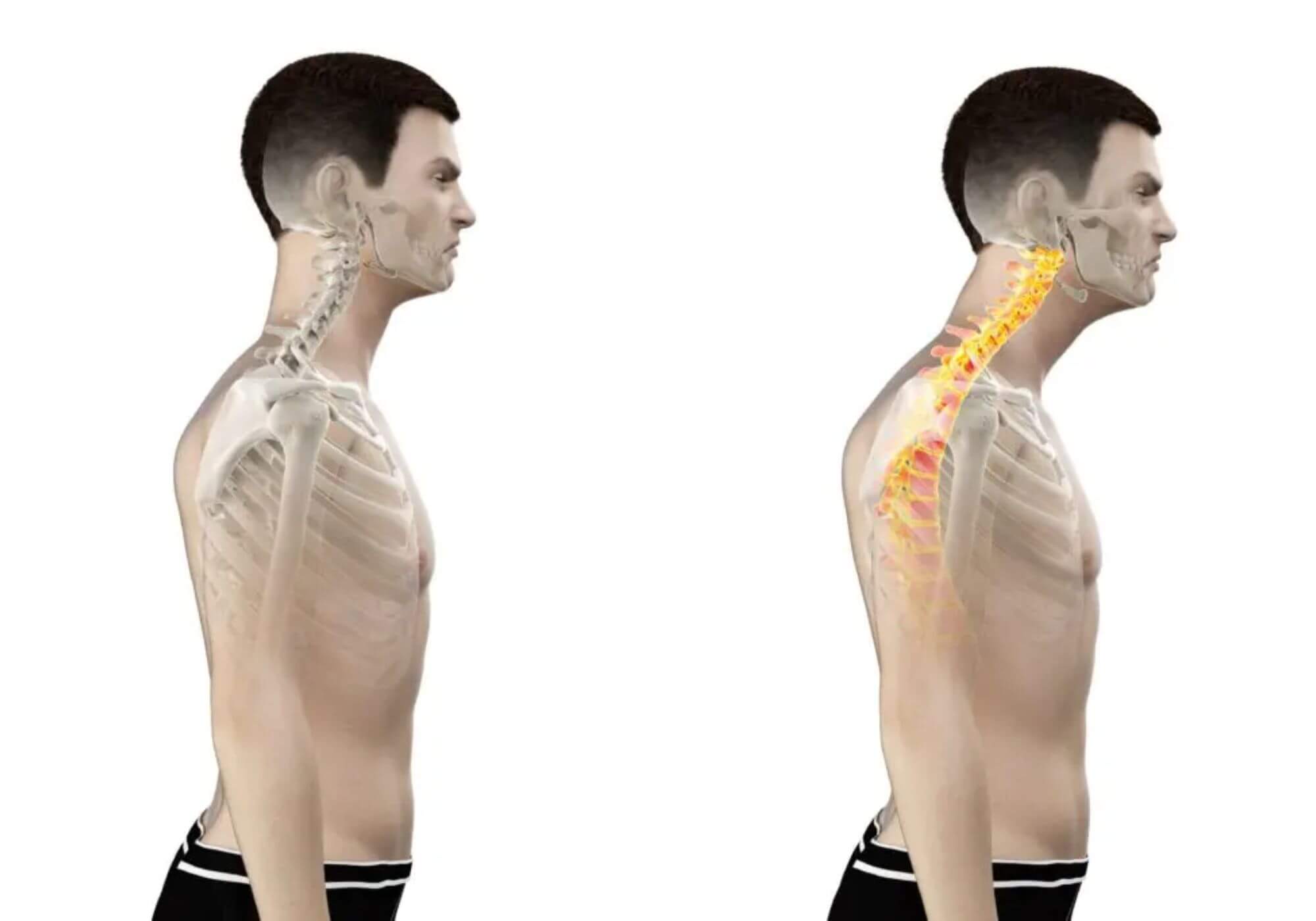Can Good Posture Really Prevent Tech Neck at Work?
Written By - Cruise Agnes
on September 23, 2025

How small posture habits protect you from big pain ?
Can Good Posture Really Prevent Tech Neck at Work?
Let’s face it—most of us never expected that modern work would leave us with neck pain, tight shoulders, and a sense that simply staring at our screens could actually shape how our bodies feel. Enter tech neck: the digital era’s most common complaint, and a subtle but growing issue now that remote work and screen time are simply part of how we live. But here’s the truth: good posture isn’t just a nice-to-have or your grandmother’s advice—it’s a superpower that, with a few simple habits and tweaks, can prevent most tech neck symptoms before they even start.
Meet Tech Neck: Your Neck on Modern Life
You might know the feeling: by the end of a workday filled with Zoom meetings, typing, and endless scrolling, your neck feels stiff, your shoulders ache, and maybe a headache starts to pulse along the base of your skull. That’s tech neck—a result of something we all unwittingly do every time we hunch over a screen.
Why does this happen? Your head actually weighs about as much as a household bowling ball (10–12 pounds), but the act of tilting your head forward to peer at your phone or a laptop can increase the effective strain on your neck to as much as 50 or even 60 pounds. Repeat that day after day, and your muscles are working overtime just to balance your head.
Who gets tech neck? Anyone who spends hours at a screen: remote workers, students cramming for exams, or anyone who swaps a lunch break for social media. And while it often starts as a little stiffness, over time, unaddressed tech neck can trigger headaches, tightness, tingling down your arms, or even chronic pain that lingers well past your workday.
How Your Posture Sets the Whole Stage
Let’s be honest: few of us spend our days sitting like statues, perfectly upright and poised. But posture matters—a lot more than most people realize.
Slouching or letting your head hang forward pulls your spine out of its natural curve, causing your neck and upper back muscles to work double time while your joints and discs take an unfair share of stress. Over months and years, that minor misalignment adds up, sometimes causing lasting issues beyond simple soreness.
But here’s the welcome flip side: good posture isn’t about sitting stiffly; it’s about stacking your head over your shoulders and letting your spine’s natural S-shape do the heavy lifting. When everything lines up, the load is shared, your neck muscles relax, and all those aches and pains can start to disappear. Plus, research shows that upright posture can even help with your breathing and focus—and give your confidence a boost on the toughest Zoom call days.
Small Ergonomic Tweaks That Add Up
Think you need fancy equipment or a total home office makeover to fix tech neck? Not so. Just a handful of tiny changes can have a big impact—and most are free.
- Raise Your Screens: Place your monitor, laptop, or tablet so the top third of the screen is just at or slightly below eye level. No special equipment needed—try a stack of sturdy books or a shoebox if you don’t have a monitor stand.
- Support That Lower Back: Even a simple rolled towel can do wonders behind your lower back, helping your whole spine, including your neck, align naturally. If you can, invest in an adjustable office chair with lumbar support.
- Arm and Foot Placement: Sit with your feet flat on the floor and knees at or just below hip-level. Your arms should rest comfortably at a right angle. This takes pressure off your shoulders and neck, setting you up for less strain throughout the day.
- Let the Light Shine: Harsh lighting or glare forces people to lean in or squint, which only leads to more hunching. Open the blinds for natural light, and adjust your screens to minimize glare whenever possible.
Micro-Movements: Your Secret Weapon
No one can (or should) sit still for hours. The key to stopping tech neck is to make micro-movements and stretches part of your day—no spandex or gym trip required.
- Neck Rolls: Drop your chin slightly down, then gently roll your head side to side. This relieves built-up tension and helps avoid stiffness after a long stint at the screen.
- Shoulder Shrugs: Lift your shoulders up toward your ears and then release them down, shaking out tension across your whole upper body.
- Chin Tucks: Imagine making a double chin—pull your chin back to strengthen the deep muscles at the base of the skull (these are essential for supporting your head in a healthy position).
- Wall Angels: Stand with your back against a wall, arms at “goalpost” position at shoulder height, and slowly slide your arms up and down, keeping them and your upper body pressed against the wall. This opens up your chest and undoes hours of hunching.
- Movement Breaks: Every half-hour, stand up and move—even just for two minutes. Walk around, stretch, or shake it out. Frequency matters far more than duration, and these tiny breaks keep your body from “locking in” a bad position.
Smarter Tech Habits Mean Better Health
Giving your body a chance to thrive in a digital world doesn’t mean giving up on screens altogether. It’s about weaving smarter tech habits and genuine self-care into your routine—a few mindful tweaks can help your neck (and the rest of you) feel better than ever.
Smarter Tech Habits, Happier Body
Let’s face it: no matter how perfectly someone sits, endless scrolling or marathon work sessions quickly add up. Fortunately, simply tweaking how you use devices can offer real relief.
- Keep Your Phone Up: Ever caught yourself bent over your phone like it’s a precious secret? That—more than anything—fuels tech neck. Try holding your phone at eye level, or prop it on a stand for binge-watching, scrolling, or reading. A little effort now means way less tension later.
- Soften the Glow: Bright, blue-lit screens make people squint, crane their necks, and inch closer without even realizing. Turning on a blue light filter, adjusting brightness, and using screens in well-lit rooms can stop you from unconsciously leaning in—or tensing up.
- The “Look Away” Trick: Protecting both eyes and posture is easy with the 20-20-20 rule: every 20 minutes, briefly focus on something 20 feet away for 20 seconds. It’s a natural circuit breaker for eye strain and that creeping slouch.
- Mute the Noise: A constant pinging phone encourages more glancing—and more hunched shoulders. Setting devices to “do not disturb” during focus times gives your neck and brain a much-needed break, helping you stay in command of your posture—not a prisoner of notifications.
Make Posture an Everyday Habit
What if the trick to feeling good wasn’t just occasional discipline, but little rituals so automatic, you barely notice them?
- Reminder Magic: Place sticky notes on your monitor, set a gentle alarm, or use a smartwatch vibration to check your posture now and again. In time, you’ll catch yourself sitting tall as second nature.
- Build a Strong Foundation: Activities like yoga, Pilates, or a round of planks work wonders for your core. When your core muscles are strong, it becomes much easier to naturally maintain upright, easy posture—even on your busiest days.
- No Perfection and Just Progress: You should not aim for rigid formalities. Instead, try making tiny readjustments whenever you think of it: uncross your legs, bring your head back over your shoulders, or stretch your chest open. Comfort and consistency matter more than holding still.
- Forgive, Move On: Everyone forgets. Tomorrow is always a new chance to try again, and small resets are more helpful than striving for long, perfect stretches. Your body is built to move and adjust.
If The Pain Hangs On…
Sometimes, nagging discomfort lingers, or pain even worsens despite every good habit. If tightness, headaches, or numbness keep interfering with work or sleep, reach out to a specialist—a physical therapist, chiropractor, or pain doctor. If you get to know the problems earlier then you will be able to fix them earlier with some good tailored guidance. And always look for help when required.
Tech Neck: Not Inevitable, Totally Beatable
Living and working with screens is here to stay, but neck pain and muscle tension aren’t life’s new normal. With a few practical changes—like picking up your phone, stacking a laptop on books, or scheduling stretch breaks—you really can protect yourself from tech neck’s worst side-effects.
Making your posture as a self-kindness will set you up for long term comfort. Each and every time you choose to stretch or look up or even simply move you are investing in a happier future and healthier one. So whenever you are tempted to hunch on your bed or even scroll just stand and do the things as sometimes it is easy to feel better every day.
More Blogs













